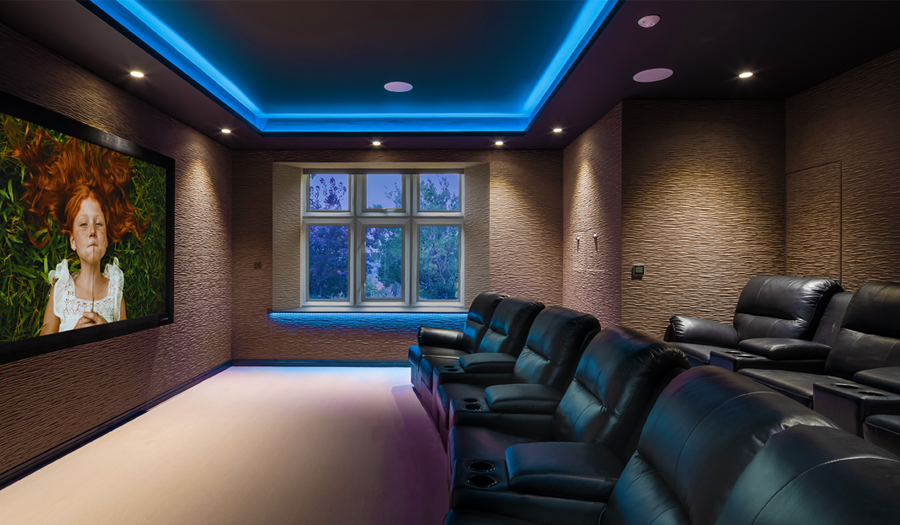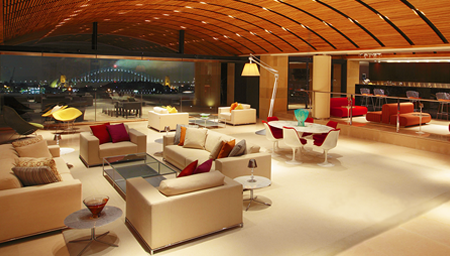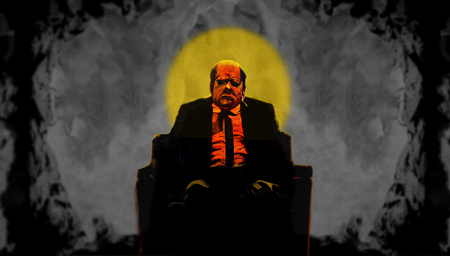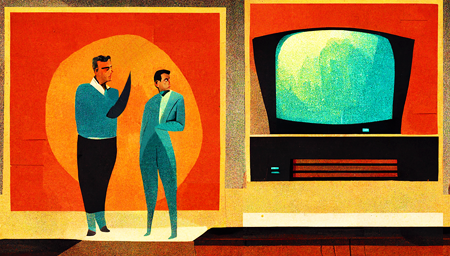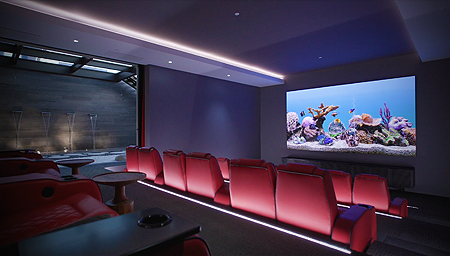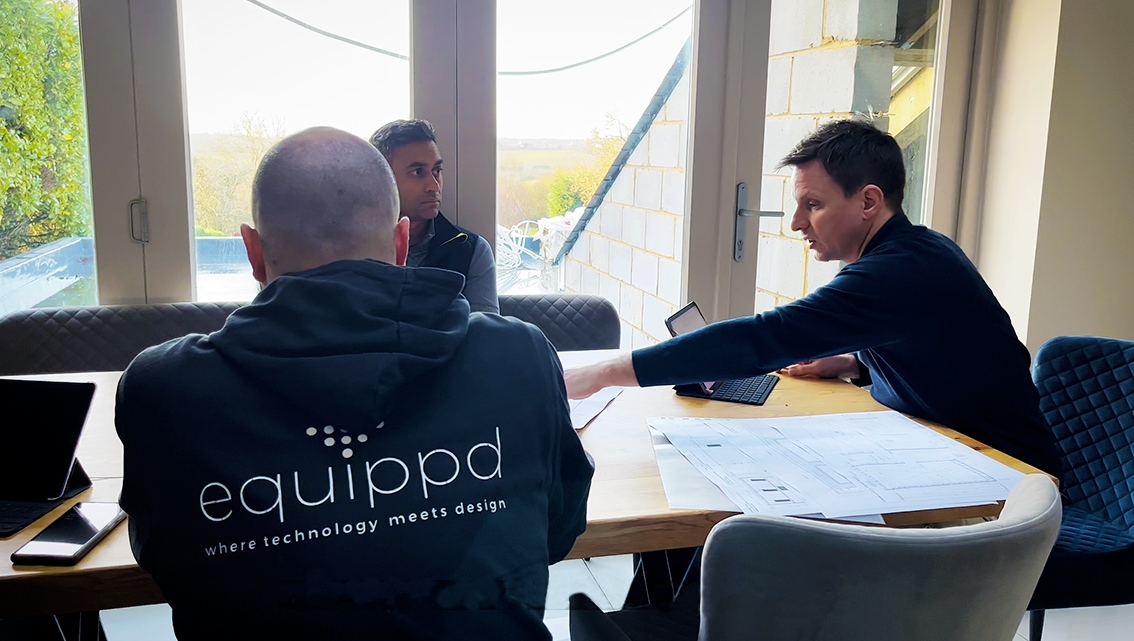
People First,
Then the Gear
By finding out all about their clients’ lives and needs well before they get around to talking about the tech, Britain’s Equippd sets an example other high-end integrators should follow
by Michael Gaughn
left | Equippd co-founder & director Matthew McCourt (at right) consults with a client at a job site
January 31, 2023
Custom integrators—the folks who come up with the gear for watching movies, running your lights and shades, cobbling together your security system, and so on—justifiably worry about just being seen as the tech guys, a stigma that leads to not being taken as seriously as architects and designers, which in turn often means they’re the last ones called in on a job. Some integrators have started to make an effort to show they understand lifestyle and design but the exercise often comes across as forced and insincere because most really are just tech guys at heart.
Consider the websites of the leading luxury integrators in the NYC market. They all look different but the messaging is all pretty much the same—not “we understand you” but “look at how great we are.” And the focus tends to be on brand names and on awards won, sometimes accompanied by a single image of a contemporary but sterile and depopulated room. Even the newer firms, which ought to be more attuned to design, usually display more attitude than empathy.
They could all afford to learn a thing or two from Britain’s Equippd. Everything about this Surrey-based high-end integration firm—from their website to their portfolio to how they engage their clients—shows they don’t just pay lip-service to but genuinely get design. Every page of their site speaks to lifestyle well before it broaches technology, and does so in a natural and disarming way that just can’t be faked.
I initially became aware of Equippd while wading though scores of photos of media rooms and private cinemas from a broad cross-section of luxury integration firms. Only one space stood out—the whimsical little theater tucked away behind a bookcase profiled in “Secret Cinema.” Everything about that room felt right. It not only looked comfortable and conducive to movie watching but evinced a deft ingenuity without ever being showy. Most striking of all was its apt sense of design, leagues away from the “we don’t really get how this works but we had to do something” aesthetic that mars most dedicated entertainment spaces.
Interviewing Equippd’s Matthew McCourt for “Secret Cinema” confirmed that the virtues on display in that theater, and in the company’s other projects, are just an organic extension of the well-considered, engaging, reassuring manner of the company’s principals. The brainchild of Matthew and his brother Charlie, Equippd adopts a familial approach that can’t help but put clients and collaborators alike at ease. Wanting to go deeper into why they get it right when so many other integrators don’t get it at all, I recently buttonholed Matthew for another transatlantic chat.
145B Walton Road
East Molesey
Surrey KT8 0DU
+44 (0)20 8191 7887
hello@equippd.uk
“If you hit people with all the brands and specifications very, very quickly, it’s just overwhelming because they don’t have enough time to digest any part of it, so they just shut down”
Your website does a nice job of showing clients how Equippd determines their needs, but could you walk me through the process a little?
It’s all about finding out how people live in their homes. Once you understand that, you can then put forward different types of technology that are going to enhance those areas or make certain things easier for them rather than going in and saying, “Yeah, this is Lutron! and Crestron! and this and that,” which will cause the client to go, “Well, what is that? Do we need that sort of stuff?”
Equippd co-founders Charlie and Matthew McCourt describe their process for determining a client’s needs
Equippd co-founders Charlie and Matthew McCourt describe their process for determining a client’s needs
The Artechouse NYC show The Life of a Neuron incorporates the work of a number of artists to tell the story of neurons
“The desire to find the optimum solution for every project is what helps to get me up in the morning, along with knowing we’re going to be trying to understand a new customer and how they want to develop their house”
Before we dig down into different types of brands and things like that, there’s a bit of a journey we have to take people along because there are a lot of different things we do when we’re integrating into a home. We’re involved in the lighting, the heating, the shading, the entertainment spaces, the multiroom audio, their garden, their shed, their attic, the security. If you hit people with all the brands and specifications very, very quickly, it’s just overwhelming because they don’t have enough time to digest any part of it, so they just shut down. But If you instead try to understand how they live and show how you can improve that while making sure the space looks good—i.e., not see the tech at all or just see the bare minimum—we find that works well.
While there has been some effort to improve the look of the things people interact with, there’s still a long way to go.
Touchscreens are ugly. All of these things don’t look good, really. And alarm panels—terrible, terrible. Everything looks like it was from the ‘80s.
So what do you do to make all of that a little more palatable?
Whether it’s interior design, system design, schematics, elevations of how walls are going to look, how keypads and touchpanels are going to sit, what else is on that wall, we’re always thinking in terms of what can we remove, how can we clean up that space. Our sole drive is, how can we simplify this? Because we’ve seen panels everywhere before in properties and light switches just everywhere. And it’s like, why? We’ve walked into houses before where even we can’t operate the light switch.
When it comes to new construction versus retrofit, how do your projects tend to skew?
New build and renovation form 90% of our work, with the last 10% being retrofit, which we tend not to do too much because we’re not geared that way.
What distinguishes renovation from retrofit?
You’ve got a lot of London residences where pretty much the whole home apart from the facade is getting knocked back, stripped out, and then completely remodeled from the ground up. We classify those as a full renovation because we’re still keeping the existing fabric or four walls of the structure.
That kind of new construction and renovation can often mean open-floorplan spaces with a mandate to include as many types of entertainment as possible but without compromising the picture or sound.
We love those challenges because design plays so much into that, looking at the space, understanding, “OK, how can we do this to be able to give them this multifaceted kind of functionality for the room but make it look good?” In an open space like that, you can’t just have what looks like a media room tucked away in one corner. It’s just not going to fit in.
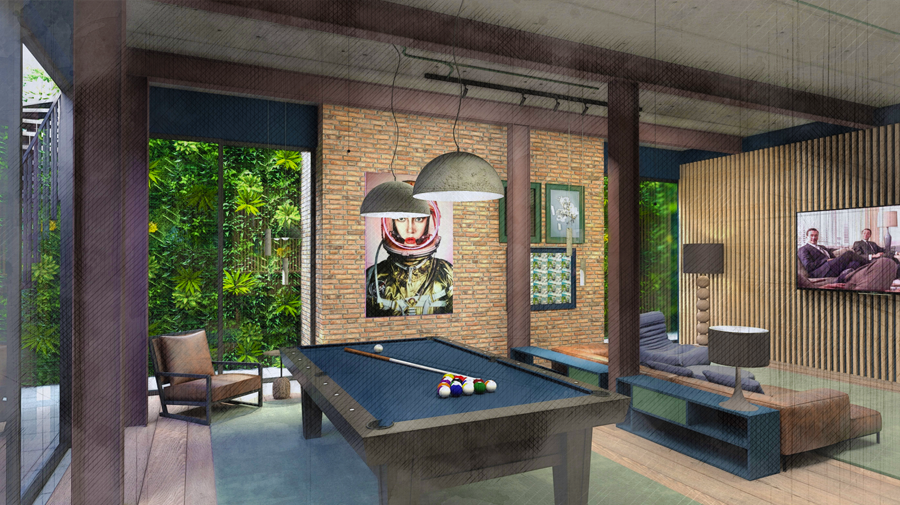
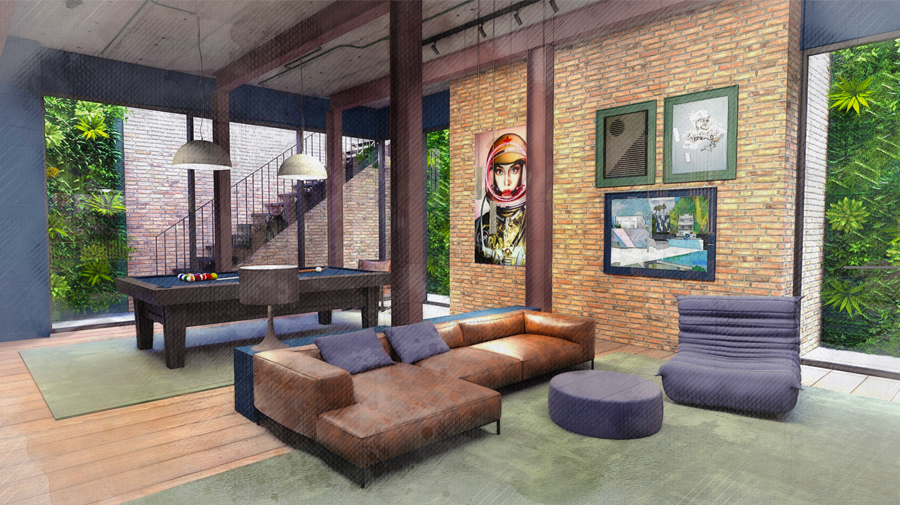
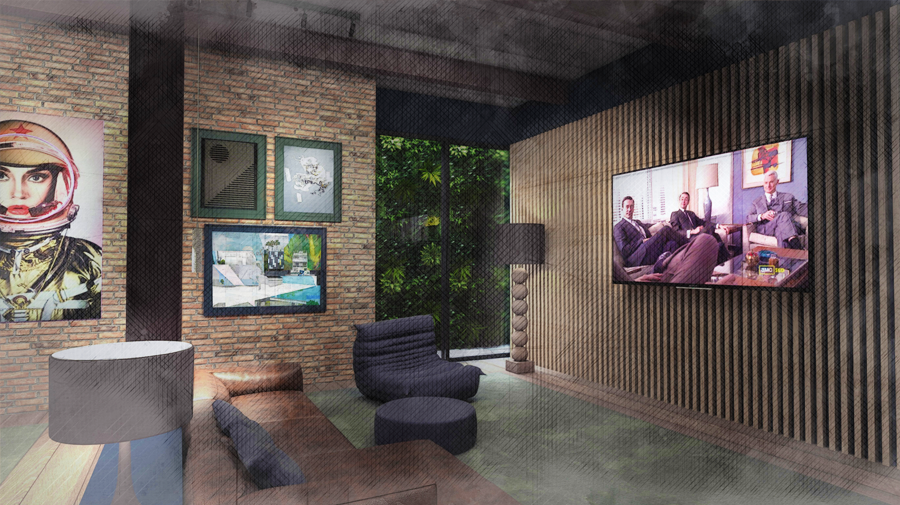
Renderings of a multi-use entertainment space. The section of the paneled wall above the TV conceals a dropdown projection screen. For movie viewing, the wall section comes forward and the screen descends in front of the TV.
Sign up for our monthly newsletter to stay up to date on Cineluxe
Have you had much call yet for video walls?
Not really. We did have one guy who wanted one as the splash-back in the kitchen. Where the hob and other stuff is would have basically been a massive TV. We quoted him but the project didn’t go anywhere.
Would it be fair to say that the living spaces themselves hold more interest for you than the technology you put in them?
Absolutely. The desire to find the optimum solution for every project is what helps to get me up in the morning, along with knowing that we’re going to be looking at something new, that we’re going to be trying to understand a new customer and how they want to develop their house, how that house is going to flow, how they’re going to use it.
Given all the things you can offer in a home, it seems almost inevitable you’d form as deep a bond with the client as the architect or interior designer does.
All the other trades do their work and then most often move on, but we’re there right at the start and then we’re also there right at the end. While the family are moving in, we’re meeting them, we’re meeting their kids, we meet their dog. And there’s a relationship that goes on after that, with any sort of tweaks and changes they want, or looking after systems and servicing them as well. I’ve always found that quite enjoyable, getting to know the people behind the home. That’s the part of the business I think is so important.
Michael Gaughn—The Absolute Sound, The Perfect Vision, Wideband, Stereo Review, Sound & Vision, The Rayva Roundtable, marketing, product design, some theater designs, a couple TV shows, some commercials, and now this.
© 2023 Cineluxe LLC


